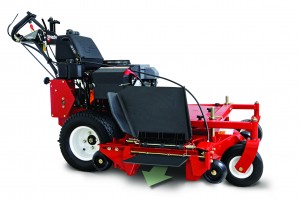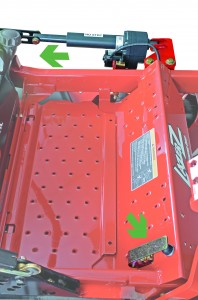If you’re a seasoned landscape professional, you already know that rain doesn’t make for great mowing conditions. Heck, it doesn’t even make for so-so conditions. But if you must mow in the rain, there are certain steps you can take to make the best of the situation and continue to deliver a cut you can be proud of.
- Always start with a clean deck and keep it clean between jobs to maximize airflow. This is good advice for mowing in any weather, under any condition.
- Change the blades as needed. Blades with greater lift tend to generate more airflow and provide better discharge power when the grass is wet.
- Keep the deck at ¼” positive rake, so the blade tip cuts the grass.
- Make sure your engine’s level is at the right RPM in order to reach maximum blade tip speed.
- Check blade drive belts for wear and tear. Replace any that might be slipping or reducing blade tip speed.
- If you frequently mow in wet conditions, pack your fuse and electrical connections with dielectric grease to prevent corrosion.
Now that you’re ready to mow, keep in mind that the grass is slick and you should practice safety measures. For one, stay clear of steep embankments and areas where your rider can lose traction; use your walk-behind instead. And slow down, especially in pivoting turns.
Once you finish mowing, you should always turn off the blades while the mower is still in the grass, so that clumps, mud, and debris fall into the grass for easier cleanup. And have a good exit plan so you’re not tracking anything through your customer’s property.
Since water is your mower’s enemy, when you’re done for the day, run your mower for 2 to 3 minutes in a dry area so water doesn’t sit on bearing surfaces overnight. And keep your machine stored indoors.
There will be times when postponing mowing is a good idea – a really good idea. If the forecast calls for heavy rain or if you notice standing water, it’s best to call it a day and wait until the rain has stopped and the grass has had time to dry. At least then you won’t be wasting time and resources.
If you have anything to add, please leave your comments below. We would love to hear from you.
This post is courtesy of Exmark Sales Manager, Dan Dorn.








